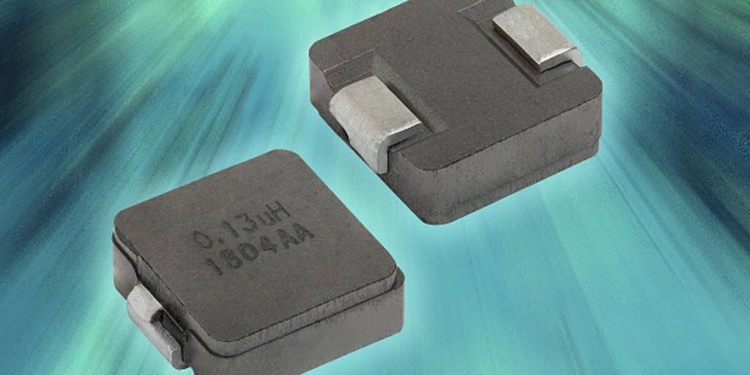Source: Vishay news
MALVERN, Pa. — August 13, 2018 — Vishay Intertechnology, Inc. (NYSE: VSH) today introduced the first device in its new IHSR series of high temperature commercial inductors. Designed for multi-phase, high current power supplies and filters in computer, industrial, and telecom applications, the Vishay Dale IHSR-4040DZ-51 offers a 50 % reduction in DCR over typical power inductors and a 20 % or greater profile reduction over similar ferrite products. In addition, the inductor boasts an unprecedented standard DCR tolerance of 5 %, with 3 % available for more accurate current sensing.
With a frequency range up to 5 MHz, the device released today is optimized for energy storage in DC/DC converters and high current filtering up to the self-resonant frequency (SRF) of the inductor (see table below). Applications include notebooks, desktop PCs, and servers; low profile, high current power supplies and filters; and DC/DC converters for distributed power systems.
The IHSR-4040DZ-51’s low typical DCR of 0.520 mΩ and inductance of 0.130 µH allow for higher current density than competing technologies, while its 4 mm profile enables slimmer end products. The inductor offers high temperature operation to +155 °C, rated current to 92 A, and handles high transient current spikes without saturation. The device is available in the 10 mm by 10 mm 4040 case size; additional case sizes will be offered in the future.
Packaged in a 100 % lead (Pb)-free shielded, composite construction that reduces buzz noise to ultra low levels, the inductor offers high resistance to thermal shock, moisture, and mechanical shock. The IHSR-4040DZ-51 is RoHS-compliant, halogen-free, and Vishay Green.
Device Specification Table:
| Case size | 4040 |
| Profile (mm) | 4.0 |
| Inductance (µH) | 0.130 |
| DCR typ. (mΩ) | 0.520 |
| DCR max. (mΩ) | 0.546 |
| Heat rating current (A) | 72 A |
| Saturation current (A) | 63(1) / 92(2) |
| SRF typ. (MHz) | 151 |
(1) DC current (A) that will cause L0 to drop approximately 20 %
(2) DC current (A) that will cause L0 to drop approximately 30 %
Samples and production quantities of the new inductor are available now, with lead times of 12 weeks for large orders.































